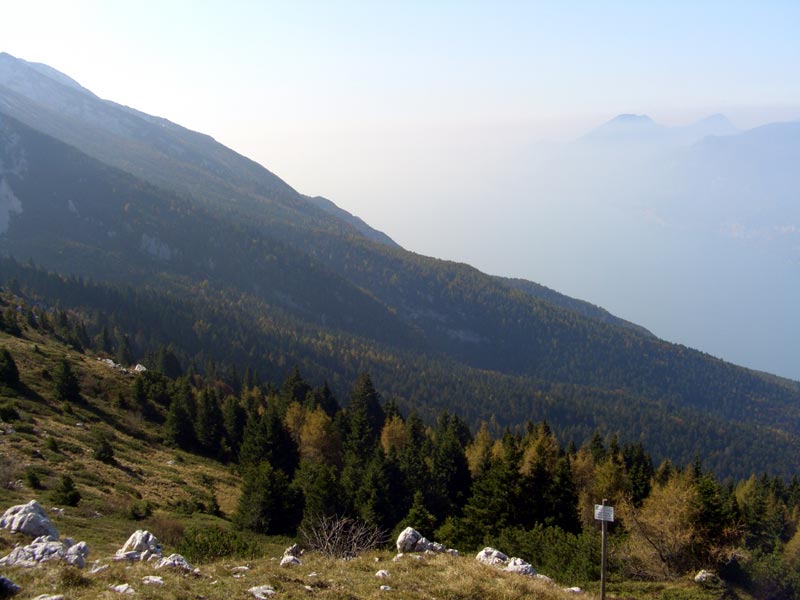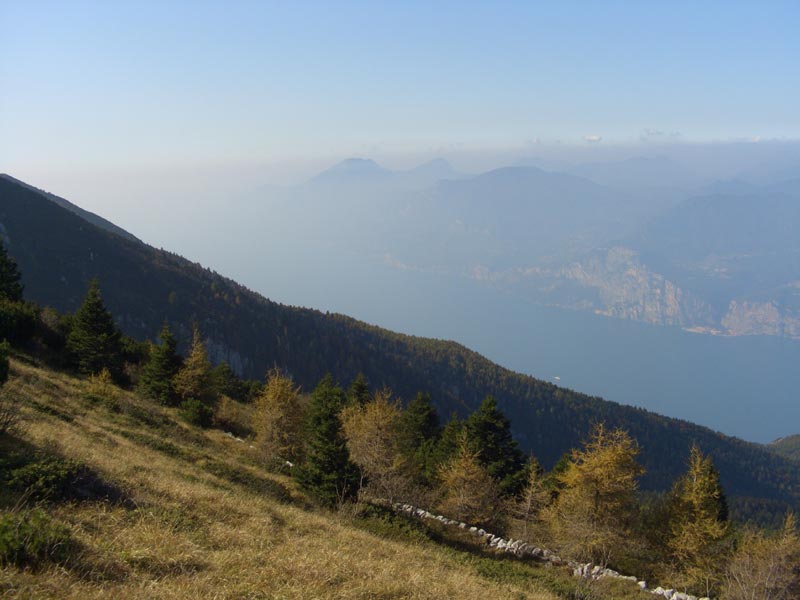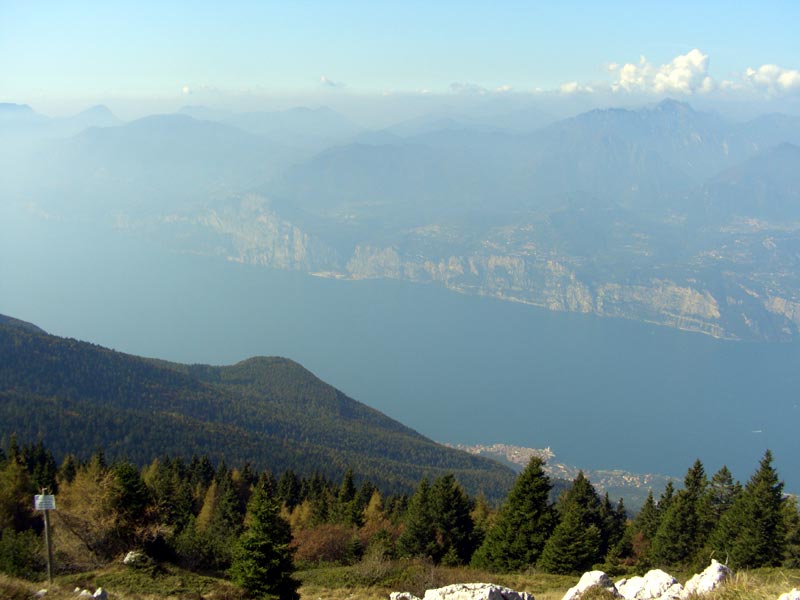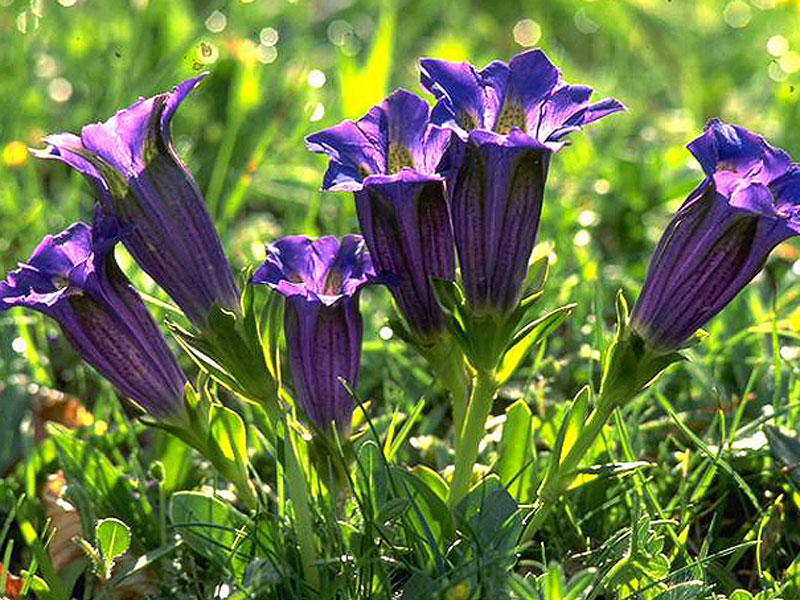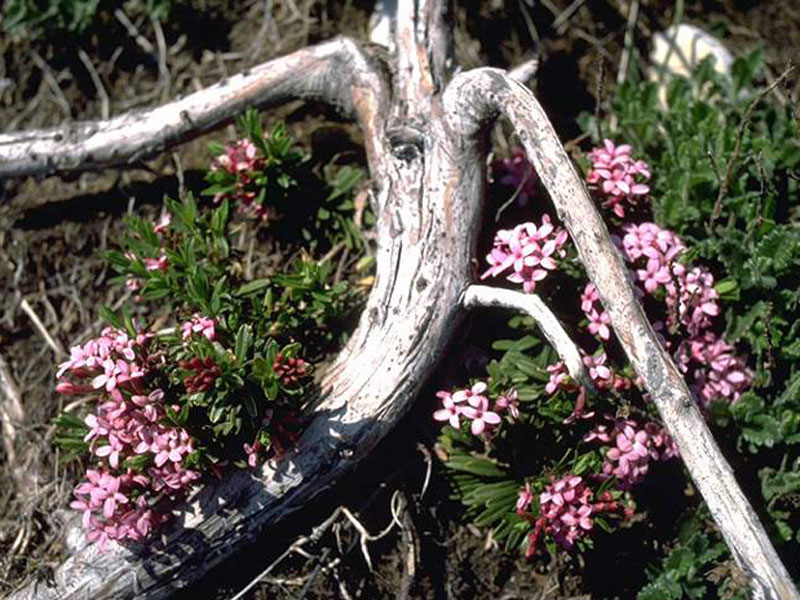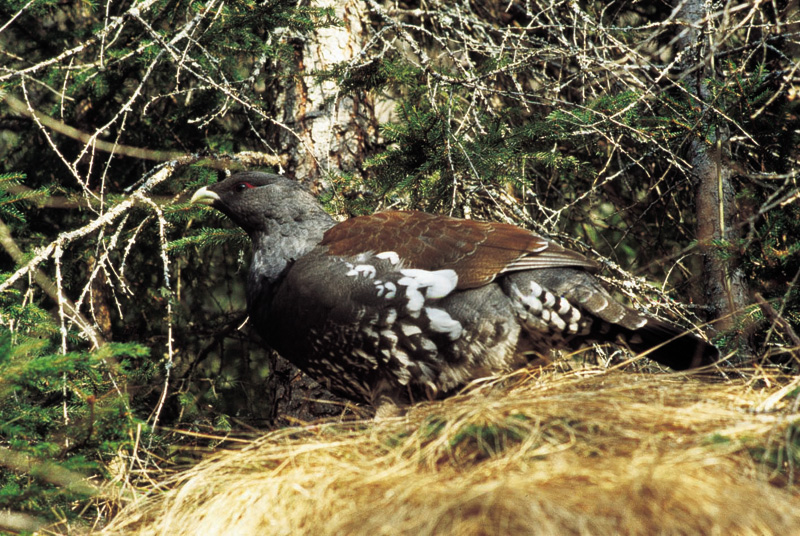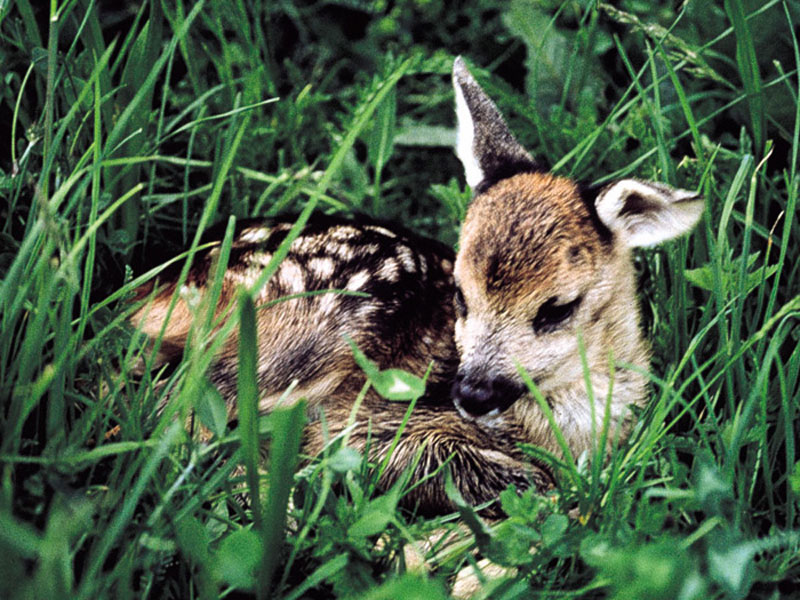Protected Area
Identity Card
- Land Surface Area: 967.61 ha
- Regions: Veneto
- Provinces: Verona
- Municipalities: Malcesine
- Establishment Measures: D.M. 26/07/1971
- PA Official List: EUAP0152
Environmental Aspects
Main environmental typologies: presence of woods with beech trees and
silver firs, of large Mountain Pine woods, of environments with
herbaceous vegetation growing above the limit of the wood, of cliffs
and screes.
Floristic-vegetational peculiarities: beech tree woods
(Xeric Soil Mountain Beech Tree Wood, Typical Dentaria Mountain Beech
Tree Wood, primitive detritus layer), carbonate soil fir forest,
Mountain Pine woods, spikenard and moor grass grasslands, Dwarf
Junipers pioneer vegetation, cliff and scree vegetation; presence of
floristic aspects (stenomediterranean elements, orophyte, endemic and
subendemic elements, species signaled as rare and/or very rare in the
Italian flora, plants included in the list of the protected species in
the Veneto region).
Flora
Lastoni-Selva Pezzi Reserve represents one of the most interesting botanic areas of Mt. Baldo.
Mesophytic Wood Vegetation
Xeric Soil Mountain Beech Tree Wood
This rather rare typology of beech tree wood is signaled in the
surroundings of the location Piombi; it prefers soils with an abundant
skeleton, both of alluvial origin and landslide deposits, rarely
semi-rupestrian situations. The formation is mainly made by a
reforestation dominated by larch, with the presence of scattered and
rather scrubby beech tree nuclei. The beech tree must be considered as
a potential situation, which could expand in the future if accompanied
by the progressive reduction of the conifers. The undergrowth is very
thick.
Typical Dentaria Mountain Beech Tree Wood
The typical
mountain beech tree wood covers a strip going from 1100 to 1300 - 1400
meters, and it gradually gives way to the overlooking fir forests.
These aspects can be found in the stretch of forest between Pozza del
Pezzon and Piombi. The beech tree, which should be the dominating tree,
often cannot show this kind of trend for the elevated frequency of the
silver and spruce firs which have been widespread through reforestation
measures. Other broadleaved trees are rare: European Mountain Ash (Sorbus aucuparia), Whitebeam (Sorbus aria). The shrubby stratum is made by Lonicera alpigena, red raspberry (Rubus idaeus), Alpine golden chain (Laburnum alpinum)
and other species; the thin herbaceous stratus is made of species
typically growing in the beech tree wood. It is necessary to notice
that, in some situations, the silver fir takes part in the cenosis with
good coverings, enabling the recognition of a probably original
variation with silver fir.
Primitive Detritus Layer Beech Tree Wood
They are
mainly shrubby formations in contact with Mountain Pine woods having
several elements in common with them. They can be mainly found in the
area of the "pale" colonizing the less mobile detritus and the ribs in
a stage following the Mountain Pine woods. Sometimes the formation can
be found in semi-rupestrian habitats. The arboreal strata is almost
absent and represented by rare beech trees elevating above the shrubs;
the maximum height of these specimens does not go beyond the 4-6
meters. The upper-shrubby strata is thick and dominated by beech tree
mixed with Mountain pine, which can be considered a guide species.
Reforestation with Widespread Presence of Larch
Within Selva
Pezzi, in the period between the 50s and the 60s, several reforestation
measures have been carried out by planting Norway spruce, silver fir,
and larch. While the Norway spruces and the silver firs are growing in
harmony with the natural vegetation of the fir forests, the larch
nuclei clearly stand out from them. The surface interested by the larch
is rather widespread and scattered in different areas of the forest.
Shrub Vegetation of the Lower Alpine Horizon (Mountain Pine woods)
The landscape of a large area of the reserve is strongly characterized
by impenetrable Mountain Pine woods covering some square kilometers of
surface. The Mountain Pine woods cover rupestrian stations and gullies
from 1,500-1,600 meters up to the highest peaks.
Carbonate Substrata Mountain Pine woods Characterized by Hairy Alpine Rose
Carbonate
substrata Mountain Pine woods characterized by Hairy Alpine Rose are
the most frequently found on Mt. Baldo. Because of the great altitude
range (from more than 2,000 meters up to about 1,000 meters), these
formations present a complex ecological articulation.
Above the 1,600-1,700 meters in the shrubby stratum of the Mountain Pine woods you can frequently find Red Raspberry (Rubus idaeus), Dwarf Juniper (Juniperus nana), Hairy Alpine Rose (Rhododendron hirsutum), Salix glabra, Heather (Erica carnea) and, among the herbs, Horminum pyrenaicum, Valeriana tripteris, Luzula nivea, Viola biflora, Stachys alopecurus, etc.
While
at higher altitudes the microthermal Mountain Pine woods can be found
together with the herbaceous cenosis typical of the high mountain, at
lower altitudes (under the 1,700m) they gradually shade into more
thermophilic Mountain Pine formations gaining ground at 1,500-1,600
meters of height, near the border of the reserve. They are
characterized by the presence of shrub species like the Dwarf Garden
Serviceberry (Amelanchier ovalis) and the Rhodothamnus chamaecistus, indicators of primitive and warm environments, and of herbaceous species among which the Erica herbacea, together with Euphrasia tricuspidata, Calamagrostis varia and Globularia cordifolia.
The passage between the two kinds of Mountain Pine woods is very soft
and takes place in a rupestrian environment which is difficult to
penetrate.
Acidic Substrata Mountain Pine Woods Characterized by Alpenrose
The
acidophilic microthermal Mountain Pine woods represent the most ripen
section of the Mountain Pine woods, above all on watershed positions;
they often derive from the growth of bushes in the grazing lands
characterized by Nardus striata. You can find them in
particular along the ridge going from Tratto Spino in the direction of
Cima delle Pozzette. In this area the Mountain Pine wood develops along
a strip delimiting the upper section of Selva Pezzi. The trend of soil
acidification is highlighted by the presence of species like the Rhododendron ferrugineum, Vaccinium myrtillus, Vacciunium vitis-idaea, Potentilla erecta, and sometimes Alnus viridis (Green Alder).
Bilberries and rhododendron, if present in great quantities, can be considered guide species.
Graminacea Formations Vegetation
Spikenard Grasslands
They are poor grazing
lands on acid reaction and decalcified soils, generally deriving from
the natural transformation of the Festuca grasslands which have been subject for a long time to an excessive
grazing activity. They are situated in the northern part of the
reserve, in the first stretch of the ridge going upwards to Cima delle
Pozzette, at altitudes between the 1700 and the 1800 meters.
The
turf is very homogeneous, with a considerable floristic richness: it is
characterized by the massive presence of the spikenard (Nardus striata), together with the typical acidophilic species of the Spikenard Grasslands: Arnica montana, Gentiana kochiana, Luzula multiflora, Danthonia decumbens, Hieracium pilosella, Potentilla erecta, etc. Scarce, if not occasional, are the species of the fertile grasslands.
Moor Grass Grasslands
This herbaceous association is typical of the steep surfaces where the
soil very rich in detritus begins to set. The characteristic aspect is
the one of the so-called "ladder meadows", where short rocky outcrops
alternate with flat sods where the herbaceous formations of Sesleria varia and Carex sempervirens grow
together with a great variety of other species. The most frequent
elements of the association, besides the two above-mentioned species,
are: Horminum pyrenaicum, Nigritella nigra, Achillea clavenae, Leontopodium alpinum, Bupleurum ranuncoloides, Hieracium villosum, Senecio doronicum and Carex baldensis.
In
some areas of Mt. Baldo, in particular in the summits, the moor grass
grassland gets enriched with other floristic elements involved in the
association with a considerable presence, in particular Ranunculus alpestris, Salix reticulata, Carex firma, Carex ferruginea and Rhodothamnus chamaecistus.
In this association we signal the presence of Callianthemum kerneranum, the most typical endemic species of Mt. Baldo.
Nival Ground Vegetation on Calcareous Rocks
Salix retusa and Salix reticulata Pioneer Vegetation
It
is situated at the bottom of the glacial cirques aligned at the foot of
the main summits of Baldo, where there is a particular vegetation
characterized by Arctic-Alpine floristic elements. In these basins the
snow remains for several months, and in the years with particular
abundant precipitation, it remains until late summer. In these
environments you can find the so-called nival valley vegetation
consisting of species which are adequate to live in conditions of
scarce lighting (given by the persistence of the snow covering), low
temperatures, and above all to live in the short period of time during
which the ground is no longer covered with snow.
Among the
characteristic species of the nival valleys we remind first of all the
dwarf willows living close to the ground: Salix retusa and Salix reticulata. Saxifraga androsacea, Galium baldense, Carex parviflora, Ranunculus alpestris are also common.
Lithophilous Vegetation
Pioneer Vegetation on Screes
The heaps of debris
consisting of incoherent coarse detritus and continuously fed by the
stones falling from the overhanging cliffs, which can be mainly found
in the glacial cirques at the foot of the main summits of the Baldo
chain, are colonized by a vegetation made of species like Papaver rhaeticum, Cerastium carinthiacum, Saxifraga sedoides, Achillea oxyloba. Other species covering a considerable surface are: Thlaspi rotundifolium, Rumex scutatus and Doronicum grandiflorum.
This vegetal formation (called Papaveretum rhaetici) can be mainly found on the slopes exposed to the north, at altitudes beyond the 1800 meters.
Cliff Vegetation
It
can be found on rocky outcrops which are very abundant in the
rupestrian environment of the ridge: it consists by an extremely
specialized consortium of Potentilla nitida, Festuca alpina and Physoplexis comosa and a few other plants, called chasmophytes. Among these, the ones which can be more frequently found during the surveys are Carex mucronata, Paederota buonarota, Valeriana saxatilis, Asplenium viride, Athamanta cretensis, Helianthemum alpestre and Campanula cochlearifolia. The association to which this kind of vegetation can be traced back is called Potentilletum nitidae, and is typical of the southern calcareous Alps.
On the rocky walls delimiting the valleys developing from glacial
cirques, at altitudes between the 1500 and 1900 meters, there is
another combination of species characterized by the Potentilla caulescens. Among the species growing with it, the main ones are Asplenium ruta-muraria, Cystopteris fragilis, Festuca alpina, Carex mucronata, Globularia cordifolia, Draba aizoides, Silene saxifraga, Rhamnus pumila, Daphne alpina.
Floristic Aspects
Within the Reserve there are several interesting species, among which Arctic-Alpine Elements,
that is species whose distribution area extends to the arctic zones and
on the mountains of the boreal temperate areas. On the alpine chain
they have a relict distribution area divided from the main distribution
area of the species after the melting of the ice during the last
glaciation. They are species living in the alpine grazing lands, above
at the climatic limit of the trees, or in alpine marshes, along the
windy ridges, in the nival valleys, or again on the alpine screes and
are for example: Juniperus nana, Salix reticulata, Salix erbacea,
Thesium alpinum, Polygonum viviparum, Silene acaulis, Clematis alpina,
Trollius europaeus, Saxifraga paniculata, Potentilla crantzii,
Alchemilla alpina, Dryas octopetale, Sibbaldia procumbens,
Arctostaphylos alpinus, Bartsia alpina, Pedicularis verticillata,
Pinguicola alpina, Lonicera cerulea, Chamaeorchis alpina.
Within the Reserve, we can find endemic and subendemic elements, that is elements present in a more or less limited or localized distribution area: Callianthemum
kerneranum; Corydalis lutea, Saxifraga tombeanensis, Primula
spectabils, Galium baldense, Euphrasia tricuspidata, Knautia baldensis
and Physoplexis comosa.
Fauna
Birds
The birds are without a doubt one of the
faunistic aspects which can be more easily observed, both considering
the present species and their behavior habits. Within the surveys which
have been carried out, 78 species have been found, 48 of which are
nesting species. The number of birds varies according to the altitude
and the habitat features. According to some evaluations, the territory
of the reserve has been divided into areas of different value; the most
interesting areas include the highest sections of the environments
interested by the presence of articulated and various forest
formations. In these sections, the number and the frequency of nesting
or occasional species, is higher than in the other areas of the reserve.
The avifauna includes several important species. Among the diurnal birds of prey: the Goshawk (Accipiter gentilis),
which has reproduced in the mixed woods of Selva Pezzi (De Franceschi,
1991) and which is also frequently signaled in autumn during the
migrations (ex. loc. Guarda) and the Golden Eagle (Aquila chrysaetos),
nesting quite regularly with some couples on the mountains of the
Verona area. While it was once very rare in the Prealps, currently the
golden eagle is increasing, and observations witness an expansion in
this area.
Another very interesting bird of prey which is considered accidental is the Red Kite (Milvus milvus),
which has been signaled more than once in flight in Valdritta in autumn
(M. Zanetti, com. pres.), at Passo del Camin (S. Rossin, com. pers.)
and in other adjacent locations.
A Bearded Vulture (Gypaetus barbatus) has also been sighted at Cima di Valdritta.
The Red-footed Falcon is also interesting (Falco vespertinus):
during the spring this small bird of prey has been sighted more than
once in an isolated flight or in small groups on the ridges in Cima
Pozzette and in the grazing lands above Colma di Malcesine and, in
autumn, in Pra Alpesina. Always among the birds of prey, it is
necessary to remind the rare sights of the Peregrine (Falco peregrinus). The Galliformes deserve a particular attention: they are represented here by the Hazel Grouse (Bonasa bonasia), the Rock Ptarmigan (Lagopus mutus), the Black Grouse (Tetrao tetrix), the Capercaillie (Tetrao urogallus), and the Rock Partridge (Alectoris graeca).
Of considerable interest the presence of the Woodcock (Scolopax rusticola), the Dotterel (Charadrius morinellus) and the Alpine Swift (Apus melba).
There are several nocturnal birds of prey: the Tengmalm's Owl (Aegolius funereus),
considered accidental in the last century, has been reproducing since
some decades with considerable success by using the cavities dug by the
black woodpecker (a species which is expanding in the area of Verona)
and also the artificial nests which are available in some adequate
mixed woods.
The presence of the Eurasian Pygmy Owl (Glaucidium passerinum)
is accidental, even if this small nocturnal bird of prey is probably
nesting in the Verona area. Among the other species, it is necessary to
mention the nesting Eagle Owl (Bubo bubo), the Tawny Olw (Strix aluco), the Long-Eared Owl (Asio otus), and the Little Owl (Athene noctua).
The Woodpeckers include very interesting species from an ecological point of view: the Black Woodpecker (Dryocopus martius), the Green Woodpecker (Picus viridis), the Great Spotted Woodpecker (Picoides major),
which is without a doubt the most common Picid and whose presence is
evident because of its noisy and frequent spring drumming and of its
characteristic singing.
As far as the Passerines are concerned, the species are numerous; among the others, we recall the Crag Martin (Ptyonoprogne rupestris) nesting among the rocks; the Alpine Accentor (Prunella collaris) living in the high mountains, the Ring Ouzel (Turdus torquatus),
a species reproducing on the lower branches of trees and shrubs at the
edges of grazing lands and which is rather frequent in all the upper
strip of the chain of Mt. Baldo; late in the autumn it leaves from this
areas, migrating towards more favorable environments. The Ring Ouzel
will go back to the reproduction area in spring, after stopping during
its journey also in the wetlands of Bassa Veronese.
Another Passerine present in the area is the Lesser Whitethroat (Sylvia curruca)
populating during the reproduction period the area of the twisted
shrubs; it is a very interesting and elusive small migratory bird
betraying its presence thanks to its intense and prolonged territorial
singing. Among the Paridae, the Willow Tit (Parus montanus) and the Crested Tit (Parus cristatus)
can be easily recognized for their characteristic bird song. During the
high-mountain traverses along the ridge path it is relatively easy to
meet in June the Wallcreeper (Tichodroma muraria), maybe when
it is returning to the nest to bring food to its chicks. This wonderful
bird is also called "rock butterfly" for the characteristic wing
fluttering when it moves on the overhanging walls.
Among the Corvids, the Alpine Chough (Pyrrhocorax graculus)
is relatively common on Mt. Baldo: winter flights of some hundreds of
specimens can be frequently seen, but also in spring you can sight the
territorial couples overlooking both slopes of Mt. Baldo chain.
The Snow Finch (Montifringilla nivalis),
an unusual species on Mt. Baldo, reproduces rather regularly at the
highest altitudes in the area of the ridges, and it is beautiful to
observe some of them looking for food among the rocky detritus at the
foot of a wall: as a matter of fact, during its moves you can see an
unmistakable alternation of white and dark flashes accompanying the
fast wing movement. The Redpoll (Carduelis flammea), the Common Crossbill (Loxia curvirostra), and the Bullfinch (Pyrrhula pyrrhula)
form another group of birds with a medium-high specific value. Among
the Emberizidae it is worth mentioning the Rock Bunting (Emberiza cia), typical of the mountain grazing lands with discontinuous grass invaded by sparse shrub vegetation.
Mammals
The mammal species present in the reserve, or at least the species we
know to live in it, are rather numerous. Among the most easily
recognizable there is the mole (Talpa europaea), of which you can often observe the traces of its activity. Remaining among the insectivorous animals, besides the ubiquitous Common Shrew (Sorex araneus), there are species which are more strictly linked to particular habitats: the Alpine Shrew (Sorex alpinus), living in environments characterized by areas with piles of stones, and the Eurasian Water Shrew (Neomys fodiens), linked to water.
Among the chiropters (bats) there are the Greater Horseshoe Bat (Rhinolophus ferrumequinum), the Lesser Horseshoe Bat (Rhinolophus hipposideros), the Myotis cappacinii and the Kuhl's pipistrelle (Pipistrellus kuhli).
Among the rodents, the presence of the Marmot (Marmota marmota) which has been introduced by man is very interesting; moreover, there are the Squirrel (Sciurus vulgaris), the Snow Vole (Microtus nivalis), the Alpine Pine Vole (Microtus multiplex), the Water Vole (Arvicola terrestris), the Wood Mouse (Apodemus sylvaticus) and the Yellow-necked Mouse (Apodemus flavicollis).
The Common Hare (Lepus europaeus) can be a prey of carnivorous animals, among which the Fox (Vulpes vulpes), the Badger (Meles meles), the Marten (Martes martes), the Stone Marten (Martes foina), and the Weasel (Mustela nivalis).
The presence of the Lynx (Lynx lynx)
has been signaled by G. Grandini from Malcesine: he could sight a
wonderful lynx specimen in the undergrowth, under the ridges of Navene,
in the afternoon of 17th September 1994. Afterwards, observations of
traces and signs witnessing the presence of this felid have been
carried out.
Among the ungulates there are the roe deer (Capreolus capreolus) and the deer (Cervus elaphus),
in the clearings within the woods on both the slopes of Mt. Baldo,
until the bottom of the valley. The chamois is also important (Rupicapra rupicapra), since it has been object of a successful reintroduction measure.


